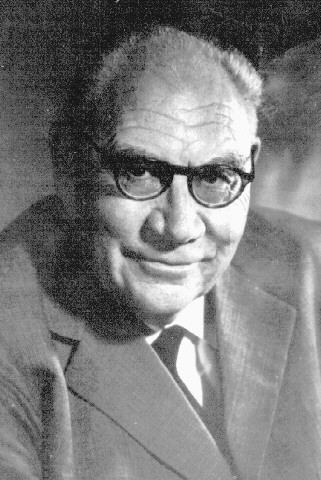Name John Jaeger | Role Author | |
 | ||
Died May 15, 1979, Canberra, Australia Books Conduction of Heat in Solids, Fundamentals of rock mechanics, Elasticity - fracture and flow, Profiting from Clean Energy: A, Operational Methods in Applied | ||
John Conrad Jaeger, FRS (30 July 1907 – 15 May 1979) was an Australian mathematical physicist.
He was born in Sydney, Australia to Carl Jaeger, a cigar manufacturer of German origin. In 1924 Jaeger entered Sydney University at the age of 16 and studied engineering, mathematics and physics, gaining a B.Sc. in 1928. He then spent a further two years studying mathematics at Cambridge University, completing Part II of the Mathematical Tripos, after which he stayed on to carry out research in theoretical physics, mainly on the photoelectric effect, the propagation of electromagnetic waves in ionized media and on circuit theory.
In 1936 he secured a post as lecturer in mathematics at the University of Tasmania, moving to Sydney when appointed to a chair in mathematics at the University of Sydney. There he collaborated with Professor Horatio Scott Carslaw on the application of mathematics to the conduction of heat. Their jointly authored textbook on the subject, Conduction of Heat in Solids, remains a classic in the field.
During the Second World War he became involved in the production of charcoal and the fracture of sandstone rollers used in newspaper production (in Tasmania). In 1943 he returned to Sydney to work at the Radiophysics Laboratory for the Council for Scientific and Industrial Research (C.S.I.R., the predecessor of C.S.I.R.O.), working for the remainder of the war on "experimental and mathematical researches connected with the generation and propagation of radio waves".
After the war he moved back to Tasmania as a Senior Lecturer and wrote a number of books. Two were new editions of previous books: Operational methods in Applied Mathematics, jointly with Horatio Carslaw in 1948 and Conduction of Heat in Solids, again with Carslaw in 1959. Two new books were An Introduction to Applied Mathematics in 1951 and An Introduction to the Laplace Transformation in 1959.
In 1951 he was invited to take the new chair of Geophysics at the Australian National University in Canberra. He moved there in 1952, gave an inaugural lecture in 1953 and established laboratory based geophysical research projects in geothermy, rock deformation and palaeomagnetism over the next three years. Other projects followed and the department was later named the Department of Geophysics and Geochemistry. Jaeger retired from the ANU in 1972.
He died in Canberra in 1979. He had married twice: firstly to Sylvia Rees, from whom he was divorced in 1950, and secondly to Martha Elizabeth (Patty) Clarke. He had no children from either marriage.
The Jaeger Medal awarded annually by the Australian Academy of Science recognises his contribution to Australian Earth science.
